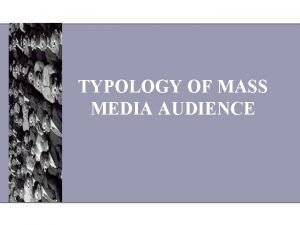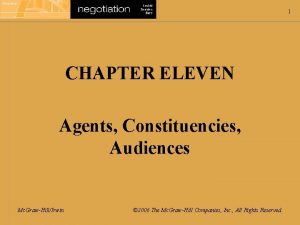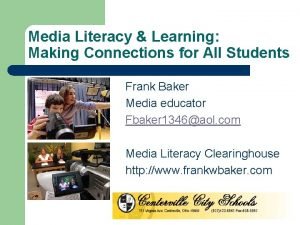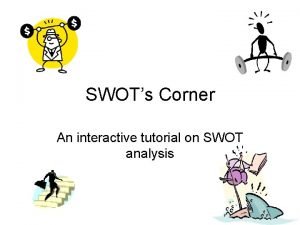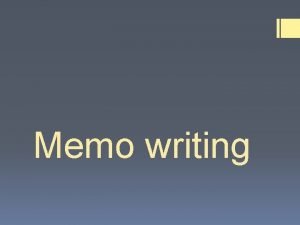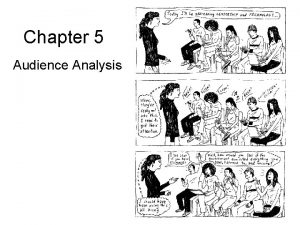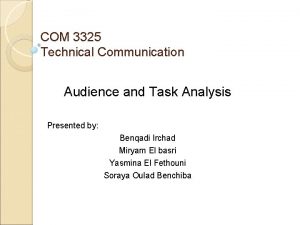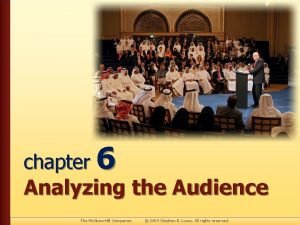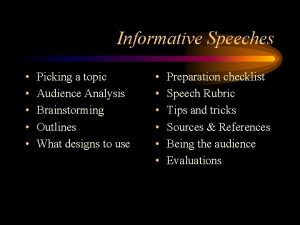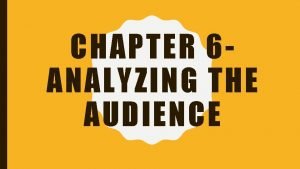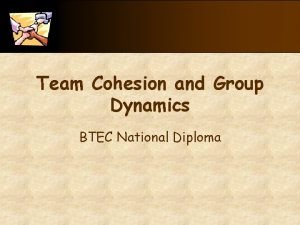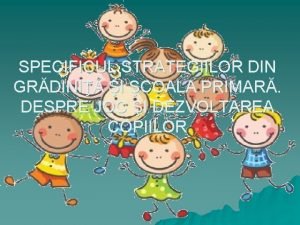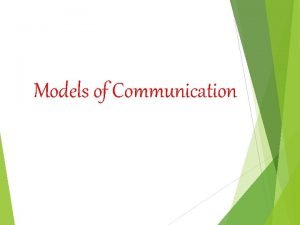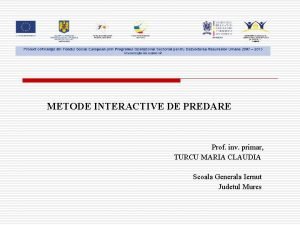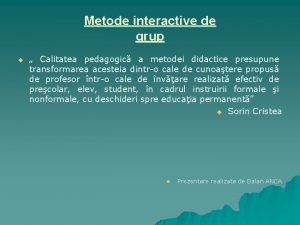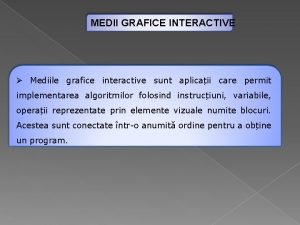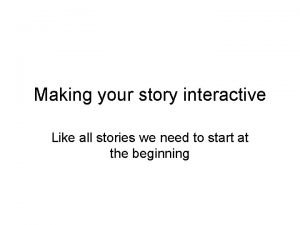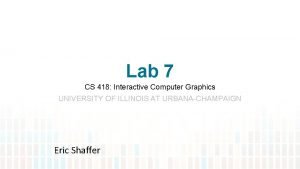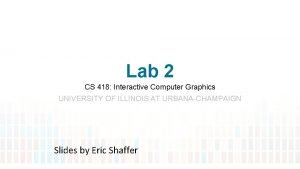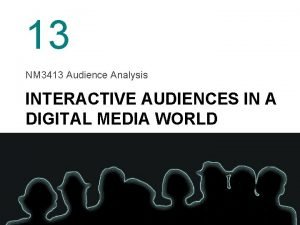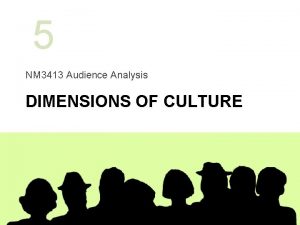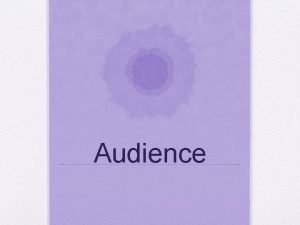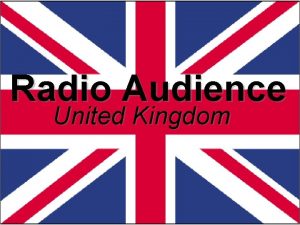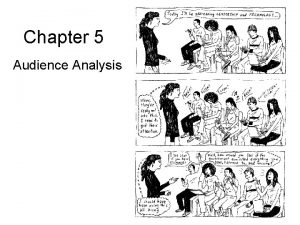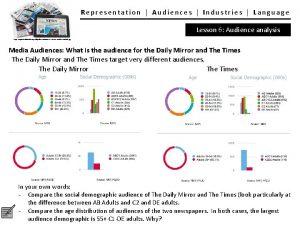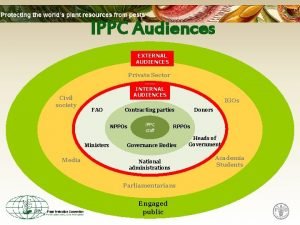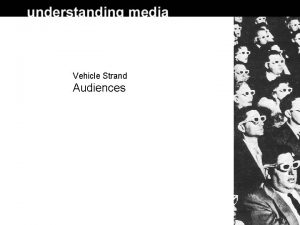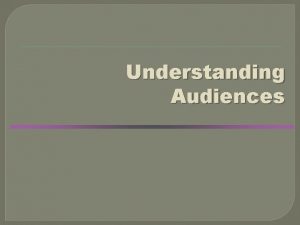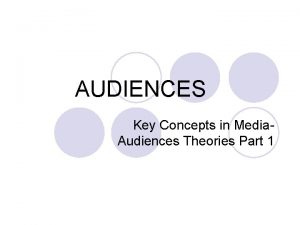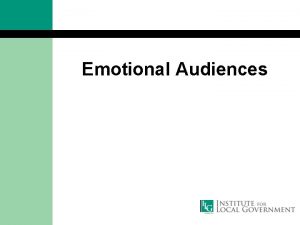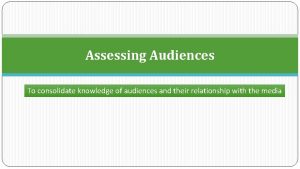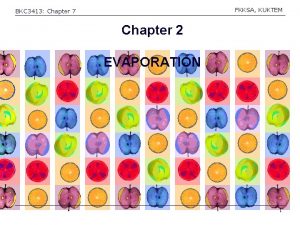8 NM 3413 Audience Analysis INTERACTIVE AUDIENCES IN










































- Slides: 42

8 NM 3413 Audience Analysis INTERACTIVE AUDIENCES IN A DIGITAL MEDIA WORLD

NM 3420 AUDIENCE CONTEXT ANALYSIS INTRODUCTION Assignment NEXT Class: 19 th March Presentation II : 15% Individual 1. Hard Copy (17%) (Lists of Questions = 3%) 2. E-copy 3. Presentation (5%)

NM 3420 AUDIENCE CONTEXT ANALYSIS INTRODUCTION Assignment NEXT Class: 19 th March Presentation II : 15% Individual 1. - Hard Copy Presentation I and Presentation II A 4 Spiral bounding You create the suitable format for your contents Reference in Footnote

NM 3420 AUDIENCE CONTEXT ANALYSIS INTRODUCTION Hard copy content 1. Define: 1. 1 Select a mobile application Unpopular but useful 1. 2 Analyze the mobile application What? How much? What problem they are trying to solve? Functions? Advantages and Disadvantages? ETC. 2. Target Audience Analysis: Secondary 2. 1 Define the target audience Who? Apply theory 2. 2 Analyze the target audience from the secondary research The target audience behavior? Size of the target? ETC

NM 3420 AUDIENCE CONTEXT ANALYSIS INTRODUCTION Hard copy content 2. Target Audience Analysis: Primary 2. 3 Collect Samples from the target audience Choose sampling methods: 2. 4 Insight analysis Analyze the group of audience (At this point do not relate any information to the app, PURE target audience analysis) No assumption, Use evidence 3. Reference EG. Interview few target audience using open-ended questions: record all activities

NM 3420 AUDIENCE CONTEXT ANALYSIS INTRODUCTION Assignment NEXT Class: 19 th March Presentation II : 15% Individual 2. - E - Copy (2 files) Exactly the same as hard copy. Pdf. Doc or. Docx Nwongjaturapat@gmail. com BY 5 pm: 19 th March ( Later than that = late - 50%)

NM 3420 AUDIENCE CONTEXT ANALYSIS INTRODUCTION Assignment NEXT Class: 19 th March Presentation II : 15% Individual 3. Presentation - 5 minute Max - State your interesting points you found in your interview - Your limitation and its effects

Today Uses and Gratification Approach (Continue) - Concept of the uses and gratifications approach - Discussion of your uses and gratifications - Uses and Gratification Approach VS Needs (Continue) Interactive & Digital Media - Characteristic of audiences in the digital media world - Participatory culture

Recap Uses and Gratification Approach A study about the effect of people on media how and why individuals use the media The theory suggests that audiences select their media channels and contents for their needs at the particular time!

Discussion Question: What is the most powerful medium in your opinion?

Social and psychological functions of mass media Katz, Gurevitch, and Haas (1973) • Cognitive needs • Affective needs • Integrative needs • Social needs • Escape needs

Social and psychological functions of mass media Katz, Gurevitch, and Haas (1973) • Cognitive needs: Needs related to “strengthening information, knowledge, and understanding” Eg. Newspaper, Books • Affective needs: Needs related to “strengthening aesthetic, pleasurable, and emotional experience”

Social and psychological functions of mass media Katz, Gurevitch, and Haas (1973) • Integrative needs: Needs related to “strengthening credibility, confidence, stability, and status” • Social needs: Needs related to “strengthening contact with family, friends, and the world” • Escape needs: Needs related to escape or tension release, also “weaken[s] contact with self and one’s social roles”

Discussion Question: In your opinion, what is the most powerful medium for escape needs?

Audience Activities and Media Motives Audiences’ uses for television A. M. Rubin (1983, 1984, 1985) 1. Ritualized audiences tend to use TV more habitually, watching in order to consume time or to be diverted from other activities. 2. Instrumental audiences search for specific kinds of message content, often seeking out and selecting informational material in a purposive way, suggesting greater care and selectivity over media as well as increased involvement with the programming itself.

‘Individual media users bring their own needs to their media experiences. These needs, in turn, shape users motivations for experiencing different kinds of media. ’

Audience Activities and Media Motives Discussion Question: Why do so many people use Facebook?

Audience Activities and Media Motives Discussion Question: What do they get out of it? (In other words, what gratifications are obtained here? )

Audience Activities and Media Motives Discussion Question: How do people tend to use Facebook?

Audience Activities and Media Motives Answers from 1, 049 undergraduate Facebook users at the University of North Carolina Chapel Hill (Bumgarner, 2007): “to waste time” “to put off doing other things” “to make fun of other profiles” “because I’m curious what others are up to” “Facebook lets me craft my identity”

Audience Activities and Media Motives Ranking of Facebook Uses Description Mean Friend functions Accepting, adding, browsing through, or reviewing friends; seeing how friends are connected; showing friends other individuals 3. 91 Personal information Reading personal information, looking through photos, reading walls, etc. 3. 78 Practical information Course and contact information 3. 38 Regulatory functions Features that offer users control over their accounts, i. e. , updating info or photos, privacy settings or editorial control over walls 3. 32 Groups Features related to Facebook groups 2. 55 Events Finding or planning events 2. 34 Misc. features Friend details; social timeline; “pulse”; poking; social web visualization; being friends with high schoolers, etc. 2. 08

Audience Activities and Media Motives Ranking of Facebook Motivations Motivation Description Mean Social utility Using Facebook with friends; talking with others about Facebook 3. 91 Directory Use as directory to keep track of people, such as for class information 3. 71 Voyeurism Learning about others from a distance; comparing oneself to others 3. 13 Herd instincts Usage because everyone else does; not wanting to be left out 3. 08 Collection and connection Amassing friends; organizing friends; feeling connected to others 3. 04 Personal expression Expressing oneself, such as to develop relationships; gaining feedback on oneself; having others understand oneself 2. 69 Initiating relationship Meeting people, particularly for romantic or sexual reasons; finding parties or events 1. 98

Interactive & Digital Media - Characteristic of audiences in the digital media world - Participatory culture

Interactive Audiences 1. Greek and Roman Audiences: Public Performance and Oral Performance 2. Print and the Shift Toward Mediated Audiences 3. Liberalism, Democratic Participation, and Crowds in the 19 th Century 4. Motion Pictures and the Rise of the Mass Audience >>> Active audience >>>> Interactive audience >>>> Prosumer (producer + consumer)

Interactive Audiences

Interactive Audiences - Creating new mode of production by transforming passive information receivers into engaged information producers. - Unknown artists can create their own cultural materials and circulate them to millions of people at a time via the web, bypassing the institutional gatekeepers in the traditional media. - The convergence of of media technologies into forms of portable digital media with interchangeable content has greatly complicated the hitherto straightforward definition of “medium. ”

Interactive Audiences Discussion question: If someone watches episodes of a television drama on You. Tube or downloads it from a peer-to-peer file sharing network like The Pirate Bay to watch on their mobile telephone, is that individual still “watching television”?

Interactive Audiences When Medium changes (in fact Added), so as everything else Now you can do more More functions New behaviors : Totally different !

Interactive Audiences When Medium changes (in fact Added), so as everything else As a media producer what would you do?

Digitalization § Digitalization refers to the standards by which media images and sounds are recorded and transmitted. § Digital media “are those media that translate the content of media - be it images or sound - into digital code, a language of ones and zeroes.

Digitalization Discussion question: What are the advantages and disadvantages of digitalization?

Digitalization


Digitalization § The digital language uses space efficiently, maintains quality, and operates as a common language that allows different types of machines to speak to one another. § Convergence: allows media content to be displayed on any number of different devices, but it has also enabled the simple reproduction of these media into computer file formats that can be easily distributed via the Internet, leading to widespread piracy of copyrighted material.

Audience Fragmentation and Audience Autonomy Napoli (2011): o Media audiences have been continually fragmented into smaller and smaller groups thanks to the dramatic expansion in media channels and media platforms. o Increasingly, this type of fragmentation is threatening to make traditional forms of audience measurement obsolete. o The terms, audience autonomy, describes “how contemporary characteristics of the media environment, ranging from interactivity to mobility to on-demand functionality to the increased capacity for user-generated content, all serve to enhance the extent to which audiences have control over the process of media consumption.

Audience Fragmentation and Audience Autonomy Napoli (2011): o On one level, media audiences are retaining more control over their media consumption by time-shifting programming via digital video recorders (DVRs), by streaming their video ondemand, and by circumventing media producers and distributors altogether via peer-to-peer computer file transfer over the Internet. o The power to generate media content in today’s online media environment is not as powerful as the power to distribute these original media productions - along with pirated or altered traditional media content.

The Rise of Participatory Culture Henry jenkins (2006): • Web 2. 0 • Fans and other consumers are invited to actively participate in the creation and circulation of new content.

The Rise of Participatory Culture Henry jenkins (2006): The participatory culture is occurring because of: 1. New technologies that enable audiences to “archive, annotate, appropriate, and recirculate media content” 2. The rise of subcultures of do-it-yourself (DIY) media production. 3. “Economic trends favoring the horizontal media conglomerates to encourage the flow of images, ideas, and narrative across multiple media channels and demand more active modes of spectatorship.

The Rise of Participatory Culture • Digitalized media has also encouraged the growth new kinds of interactive media experiences that leverage the networked, social aspects of the web, such as online gaming and massively multiplayer online role-playing game (MMORPG). • World of Warcraft

The Rise of Participatory Culture MMORPG What keeps the millions of players coming bake again and again is: -The ability to compete against and interact with, millions of other game players in real time. -Players can largely dictate their own movements and goals within the virtual environment. -MMORPGs have transcended the traditional media/produceraudience/consumer dynamic to place the audience in the role of cocreator.

The Rise of Participatory Culture Four types of online players Burtle (1996) 1. Socializers: chatting and interacting with other users 2. Achievers: looking for treasure within the game 3. Explorers: interested in the inner workings of the game 4. Killers: those whose interest simply revolved around imposing their own will on others.

Reference: Sullivan, John L. Media Audiences: Effects, Users, Institutions, and Power. Los Angeles, CA: Sage, 2013.
 Invoked audience
Invoked audience Types of media audiences
Types of media audiences Active audience examples
Active audience examples Psychographic groups media
Psychographic groups media How agents, constituents and audiences change negotiations?
How agents, constituents and audiences change negotiations? It communicates that audiences “ negotiate” meaning.
It communicates that audiences “ negotiate” meaning. Sap business one analytics
Sap business one analytics Swot analysis tutorial
Swot analysis tutorial Steps of audience analysis
Steps of audience analysis Purpose of a memo
Purpose of a memo Audience analysis example
Audience analysis example Formal vs informal audience analysis
Formal vs informal audience analysis Introduction to audience analysis
Introduction to audience analysis Audience analysis questions examples
Audience analysis questions examples Unacquainted-audience presentation
Unacquainted-audience presentation Audience analysis in technical communication
Audience analysis in technical communication Situational audience analysis
Situational audience analysis Situational audience analysis example
Situational audience analysis example Audience analysis example for informative speech
Audience analysis example for informative speech What does being audience-centered involve
What does being audience-centered involve What is visual framework public speaking
What is visual framework public speaking Explain market analysis
Explain market analysis Mussolini death
Mussolini death Multimedia becomes interactive multimedia when
Multimedia becomes interactive multimedia when Taba model
Taba model Interactive voice response system randomization
Interactive voice response system randomization Cogat.com interactive profile interpretation
Cogat.com interactive profile interpretation Online ups block diagram
Online ups block diagram Understanding experience in interactive systems
Understanding experience in interactive systems Limitations of linear model of communication
Limitations of linear model of communication Steiner's model of group effectiveness
Steiner's model of group effectiveness Strategie didactica
Strategie didactica Nitrogen cycle interactive
Nitrogen cycle interactive Interactive machine translation
Interactive machine translation Interactive ultrasound simulator
Interactive ultrasound simulator Advantages of shannon and weaver model of communication
Advantages of shannon and weaver model of communication Metode interactive de predare
Metode interactive de predare Cubul metoda interactiva
Cubul metoda interactiva Medii grafice interactive de programare
Medii grafice interactive de programare Your story interactive
Your story interactive Cs 418 interactive computer graphics
Cs 418 interactive computer graphics Glcreatebuffer
Glcreatebuffer Interactive session poster
Interactive session poster

